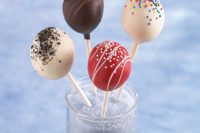![]()
Winning the Kid Seal of Approval
at the top of toyland |
| These are the top 10 toys for 2003, according to Yahoo! and
Yahooligans! based on votes Yahoo! received from its kid users. 1. X-Box |
| movies that will move them |
| (The 2004 Spring/Early Summer
Movie Release Schedule for Kids)
March 12, 2004 - “Agent Cody Banks 2: Destination London”
(MGM) |
| According to "The Great Tween Buying Machine: Capturing Your Share of the Multi-Billion-Dollar Tween Market" (Dearborn Trade Publishing, May 2004), most tweens (ages 8-12) report earning money from household chores, birthdays, and holidays. In addition, the majority of tweens (56 percent) receive at least some form of allowance from their parents. Older tweens (ages 10 and up) are earning additional funds from activities like babysitting, mowing the lawn, and shoveling snow. Small percentages even report having an after-school job. | ||
How Much Money Do
You Spend Weekly? |
||
| Dollar Amount | 8-to-9 year-olds |
10-to-12 year-olds |
| Less than $5 | 78% |
61% |
| More than $5 | 24% |
39% |
| Source: WonderGroup/KidzEyes 2003 Study | ||
Key Kid Licenses for 2004 |
|
MOVIES “Spiderman 2” “Shrek 2” NEW TV SHOWS |
|
UP-AND-COMING PROPERTIES “Neopets” “Astro Boy” “Olivia” “Baby Einstein” HOT CLASSICS FOOD AND CANDY |





